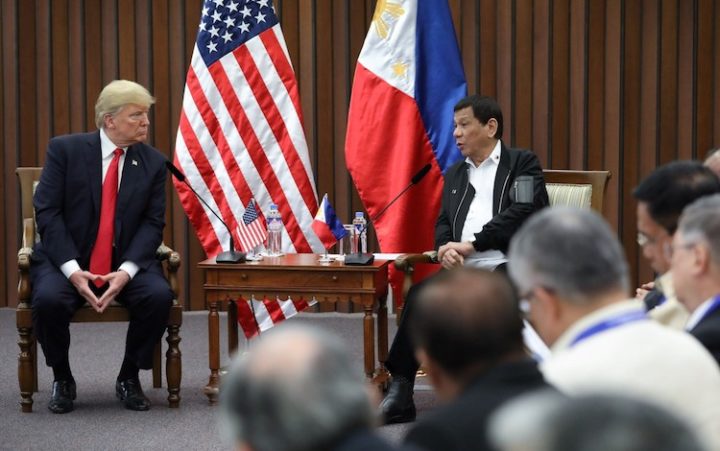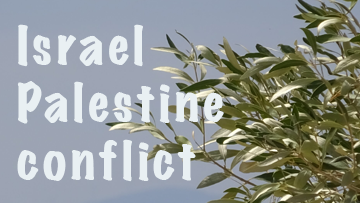Viewpoint by Aileen S P Baviera*
Professor Aileen Baveira died of COVID-19 in Manila on 21 March 2020.
MANILA (IDN) — The Philippines was first a colony and then a formal treaty ally of the United States for so long that many Filipinos tend to take the existence of reciprocal defence obligations for granted. For the most part, the Philippines has always supported US security objectives when asked — whether during the Pacific War, the Korean War, the Cold War, the conflicts in Indochina or the ‘Global War on Terror’.
This support was not always unconditional or particularly strong. Domestic opinion and regional sensitivities still had to be considered — including US concerns over entrapment and Philippine fears of abandonment.
But even the closure of major US military bases (Clark Air Base and Subic Naval Base) in the early 1990s following acrimonious negotiations to renew the basing agreement did not completely remove Manila’s importance as a strategic location for US operations in the Asia Pacific. In consequence, the 1998 Visiting Forces Agreement (VFA) and the 2014 Enhanced Defense Cooperation Agreement (EDCA) were put in place to ensure there was a legal framework to regulate the presence of US troops and the conduct of joint activities.
The security interests of the two sides continued to converge post-Cold War. As terrorist networks expanded across Southeast Asia and concerns grew over China’s maritime assertiveness in the disputed South China Sea, the Philippines still found the alliance useful for deterrence, capability-building and armed forces modernisation. The 2012 Scarborough Reef standoff with China and the 2017 Marawi siege by ISIS-inspired extremists are incidents etched in recent memory that underscore the continuing value of the 1951 Mutual Defense Treaty for both sides.
Many were surprised, therefore, when the Duterte administration served the US government notice of termination of the VFA on 11 February this year, to take effect after 180 days.
While the move has been justifiably criticised by many as whimsical, reckless and untimely, it has taken place in a particular context. Both internal factors — improved confidence buttressed by a growing economy, winding down of the longstanding Muslim separatist movement and a declining communist insurgency — and external factors — an improvement in bilateral relations with China, the worrisome trajectory of great power competition, the Trump administration’s credibility issues and the greater security efficacy of other middle powers — are pushing the Philippines out of path-dependent defence reliance on the United States.
Like other countries in the region, the Philippines fears getting caught in the crossfire should US–China animosity lead to conflict. China’s effective use of carrots and sticks — economic incentives alongside coercive diplomacy and economic statecraft — has left countries ambivalent about their own priorities. The prospect of economic connectivity with China via the so-called Belt and Road Initiative is one that the pragmatic elites of the region do not lightly dismiss. This has led most regional governments to adopt hedging strategies on China, rather than balancing or containment behaviour.
At the same time, the security challenges that China presents expose the inadequacy and sometimes irrelevance of traditional security approaches. ‘Grey zone’ attacks cannot be countered using the old tools that defence alliances have in their arsenals.
For the Philippines, losing control of Scarborough Shoal despite the Obama administration’s role in the 2012 negotiations, as well as subsequent US inaction while China embarked on major island construction activities in the South China Sea, brought home hard truth about what one can realistically expect from an ally.
President Duterte is the first Filipino leader to publicly acknowledge this. This does not mean that US support is no longer needed or wanted — only that Washington’s willingness to get involved cannot be assumed, and that its support carries its own risks and uncertainties.
Many countries in Asia are coming to terms with a strategic environment where China expects a louder voice in regional affairs. The challenge for these countries is binding China to a rules-based order to ensure that it respects the rights of its neighbours as sovereign if not equal states.
In Southeast Asia, the preferred order is one that is inclusive rather than exclusionary, where larger powers engage constructively. Weak or small states usually have little influence in these processes and are often pressured into taking sides or remaining silent. But middle powers may act to preserve their autonomy amid great power competition.
This could explain why Duterte invokes the need to end dependence on the United States as a justification for terminating the VFA. Interestingly, ending the VFA reinforces the Trump administration’s preference for minimising alliance obligations and comes at a time when China’s assertiveness is making the Philippines’ neighbours far more jittery. In this sense, the decision is creating more instability, not less.
Multilateral institutions such as ASEAN and its extended dialogue networks remain attractive platforms for middle powers to shape their strategic communities. But these institutions must be strengthened to remain relevant. As the concept of the ‘Indo-Pacific’ continues to be debated in terms of what it can contribute to regional stability and security, ASEAN ‘centrality’ will be challenged.
Will the Philippines gradually transform from a secondary power supportive of, and dependent on, US primacy into a middle power pursuing its own autonomous interests through more inclusive diplomacy? So far, no such vision has been articulated. But by moving farther away from the United States, Duterte is taking a gamble that may force him down this path. Otherwise, the only remaining alternative is alignment with China.
* This article first appeared on EastAsiaForum. Aileen S P Baviera was Professor of China Studies and International Relations at the Asian Center, University of the Philippines, and the founding president of Asia Pacific Pathways to Progress. A longer version of this article appears in the most recent edition of East Asia Forum Quarterly, ‘Middle Power Game’, Vol. 12 No. 1. [IDN-InDepthNews – 04 April 2020]










